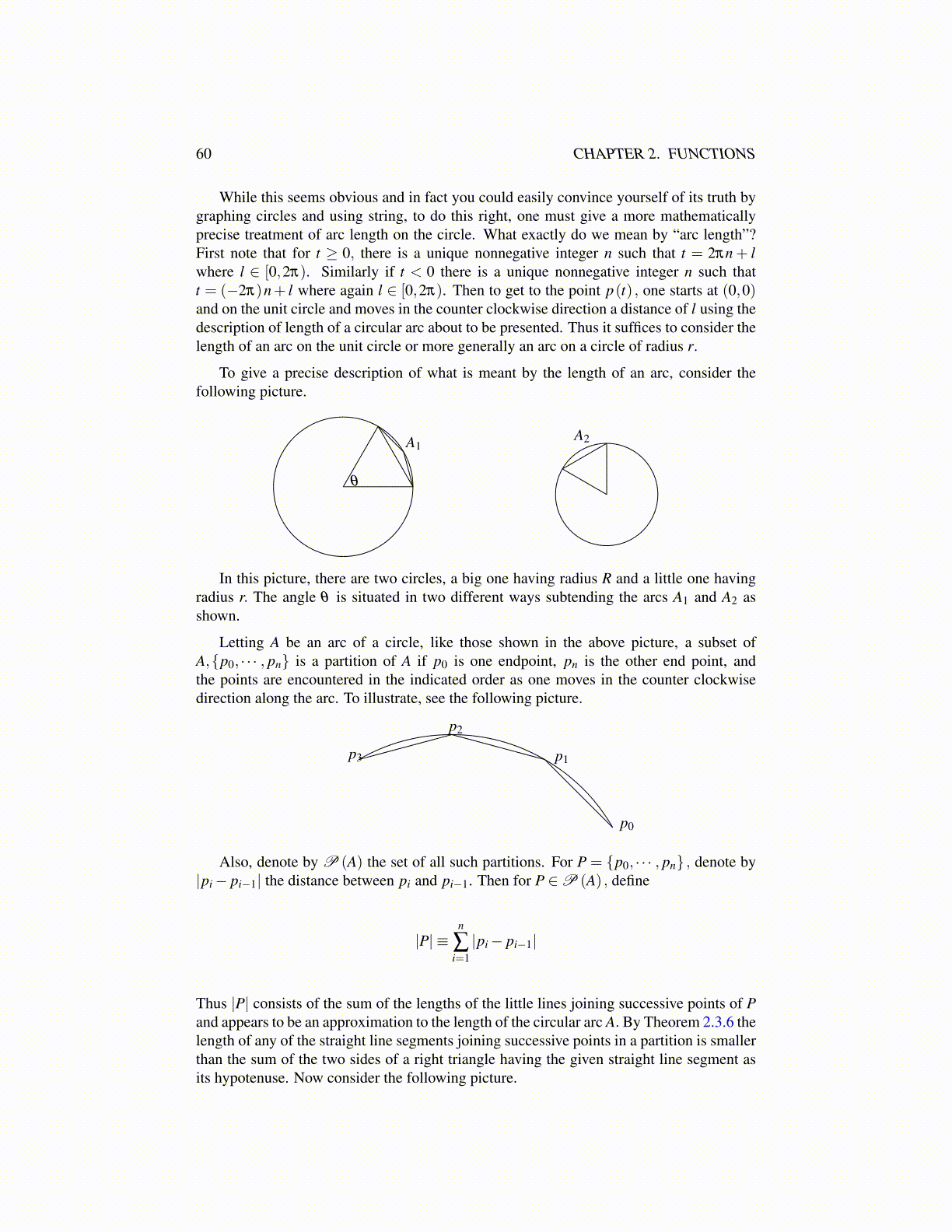
60 CHAPTER 2. FUNCTIONS
While this seems obvious and in fact you could easily convince yourself of its truth bygraphing circles and using string, to do this right, one must give a more mathematicallyprecise treatment of arc length on the circle. What exactly do we mean by “arc length”?First note that for t ≥ 0, there is a unique nonnegative integer n such that t = 2πn + lwhere l ∈ [0,2π). Similarly if t < 0 there is a unique nonnegative integer n such thatt = (−2π)n+ l where again l ∈ [0,2π). Then to get to the point p(t) , one starts at (0,0)and on the unit circle and moves in the counter clockwise direction a distance of l using thedescription of length of a circular arc about to be presented. Thus it suffices to consider thelength of an arc on the unit circle or more generally an arc on a circle of radius r.
To give a precise description of what is meant by the length of an arc, consider thefollowing picture.
A1
θ
A2
In this picture, there are two circles, a big one having radius R and a little one havingradius r. The angle θ is situated in two different ways subtending the arcs A1 and A2 asshown.
Letting A be an arc of a circle, like those shown in the above picture, a subset ofA,{p0, · · · , pn} is a partition of A if p0 is one endpoint, pn is the other end point, andthe points are encountered in the indicated order as one moves in the counter clockwisedirection along the arc. To illustrate, see the following picture.
p1
p0
p2
p3
Also, denote by P (A) the set of all such partitions. For P = {p0, · · · , pn} , denote by|pi − pi−1| the distance between pi and pi−1. Then for P ∈ P (A) , define
|P| ≡n
∑i=1
|pi − pi−1|
Thus |P| consists of the sum of the lengths of the little lines joining successive points of Pand appears to be an approximation to the length of the circular arc A. By Theorem 2.3.6 thelength of any of the straight line segments joining successive points in a partition is smallerthan the sum of the two sides of a right triangle having the given straight line segment asits hypotenuse. Now consider the following picture.